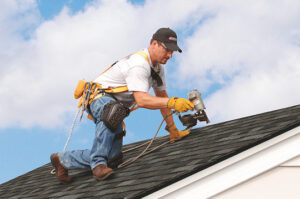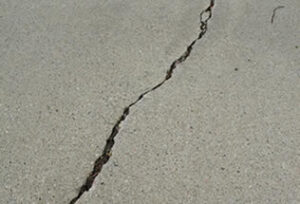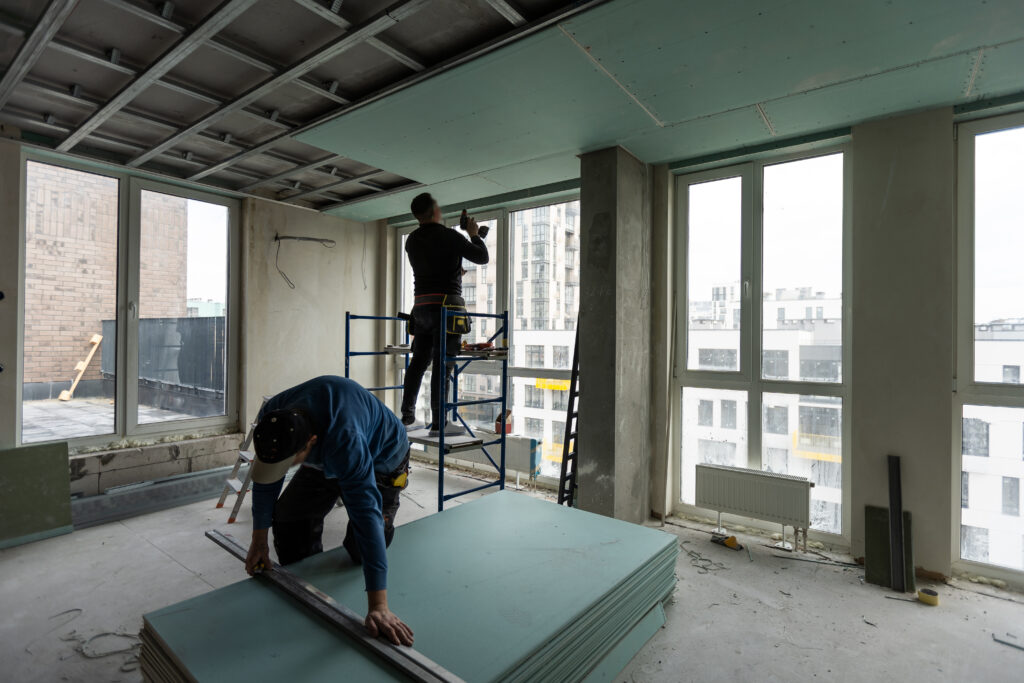Roofing Contractors are professionals who specialize in the roof of your home. They often carry out work for insurance claims. They typically gain standing with manufacturers that allow them to offer substantial warranties.

Getting estimates from multiple contractors is best. Make sure the estimates are based on the same scope of work and provide similar materials and systems.
Roofing contractors have the expertise to manage different aspects of the re-roofing process. They can handle difficult or complex projects, address unexpected problems, and ensure that the project is completed on time and within budget. A good contractor will be able to communicate with you throughout the project and provide a quick response when concerns arise. They should also be able to explain how they will handle any additional work that may arise during the project.
A reputable roofing contractor will be transparent about their post-project support policies and insurance claims. They will have a clear process in place for handling any issues that may arise after the job is complete. This will give you peace of mind that your contractor will stand behind their work and will be able to resolve any issues quickly and effectively.
When selecting a roofing contractor, you should ask about their experience and check references. You should also ask about their pricing and what services they include in their quotes. A good roofing contractor will be able to provide you with a detailed contract that outlines what is included in the quote and what work is expected to be performed.
Another important question to ask is whether or not the company uses subcontractors. Many companies that specialize in shingle, tile and metal roofs will have their own full-time workers rather than subcontracting the work to other professionals. This can make a difference in the quality of work and how quickly it is done.
Lastly, a reputable roofing contractor will have a wide range of skills and can perform other home improvement work as well, such as siding and window installation. This can save you time and money because you only have to deal with one contractor instead of several different people.
Regardless of the size of your project, it is important to understand what a roofing contractor can do for you before hiring them. You should also know the types of repairs that you need and request price estimates from multiple roofing companies.
Experience
Roofing contractors typically have extensive experience in the field, and they can offer a wide variety of services. They know how to manage the various aspects of a re-roofing project, from initial assessment and estimate through the permitting process, inspections, and final cleanup. They can also use their past experience to anticipate problems that may occur and develop strategies for addressing them.
If you are considering hiring a roofing contractor, be sure to request references from previous clients. These can give you a good idea of the contractor’s quality of work and their level of professionalism. It is also a good idea to check online reviews and social media profiles, which can help you weed out untrustworthy contractors. Lastly, you should look for a contractor that has gained standing with manufacturers as this can allow them to offer extended warranties on their services.
When looking for a roofing contractor, it is also important to consider how they handle complaints and bad reviews. For example, if a customer complained about a leaky roof shortly after the project was completed, how did the contractor respond? Did they take responsibility for the problem and make it right?
Depending on where you live, there may be licensing requirements for roofing contractors. In addition, you must complete pre-licensing training and pass the exam. You may also need to obtain a business license, which can vary by state. To find out what requirements apply in your area, contact the local licensing department. You can also find out about other industry-specific resources, such as ladder safety guides and a list of roofing materials.
License
A roofing contractor can provide a wide range of services, including the installation, repair and maintenance of roofs and other related structures. Depending on where they work, a roofing contractor may be required to hold a state license. This is particularly true if they do commercial or residential work. In order to obtain a roofer’s license, they may be required to complete pre-license training and pass an exam. They may also be required to carry insurance coverage to protect against any liabilities incurred on the job.
A roofing contractor must obtain a Construction Contractor License or Residential Specialty Contractor License from the state’s Construction Contractors Board. To obtain this, they must first complete pre-licensing training and pass the PSI examination for either the construction contractors or residential specialty. They must then register with the board and submit documentation and fees. Moreover, they must also have workers’ compensation and general liability insurance.
Roofing contractors in Alaska must be licensed to perform roofing and siding work. To qualify, they must have three years of experience and pass an exam administered by the state’s Contractors Registration and Licensing Board. Additionally, they must be able to provide proof of liability and worker’s compensation insurance.
Although it does not require a roofing contractor to have a state license, it is recommended that they be licensed. This is because the new law requires certain disclosures on home improvement contracts, and a roofing contractor must be licensed in order to meet these requirements.
Besides being licensed, a roofing contractor must have a good reputation for quality work and customer service. It is also a good idea for them to be affiliated with a national or regional roofing association. This will ensure that they are up to date on any developments in the industry and have access to information about roofing materials and techniques. In addition, roofing associations often offer courses and seminars to help roofing contractors improve their skills. They can also help them keep abreast of any regulatory changes in the industry. They can also assist with the filing of state or local permits and inspections.
Insurance
When choosing a roofing contractor, it is critical to check their insurance coverage. They should have a Commercial General Liability Insurance Policy covering their business operations, including property damage and bodily injury to third parties. The policy should also cover legal fees and judgments awarded against them. In addition, a roofer should have an Equipment Floater policy that covers a broader range of hazards that can damage their equipment. It should cover things such as fire, vandalism, theft and natural disasters.
A roofer should also have workers’ compensation insurance for their employees. This type of policy pays medical expenses and lost wages if an employee is injured on the job. This is especially important because roofing is a dangerous job. If a worker is not covered by workers’ compensation, the owner of the roofing company could be responsible for hospital bills, funeral costs and lost income.
Another thing to look for is a roofer’s certificate of insurance. This document should show the companies that provide the insurance, the policy number and the dates of coverage. If you notice that the coverage expires or changes, this is a red flag. Changing insurers can cause gaps in coverage, leaving you exposed to liability.
You should also ask a potential roofer to show you proof of insurance before they start work. This is a standard practice in the industry. Often, contractors will show you an accord form that shows the names of their insurance carriers, policy numbers and dates of coverage. This is the best way to verify that they have insurance. However, you should keep in mind that these documents can be faked or the coverage may be lapsed or improperly endorsed.
Lastly, roofers should have builders risk insurance for their projects. This type of small business insurance protects against damage to buildings while they are under construction. It includes coverage for materials, labor and building supplies. It should also include coverage for construction vehicles, such as trucks and plows.





